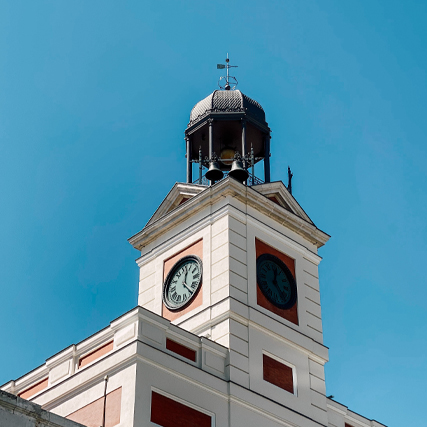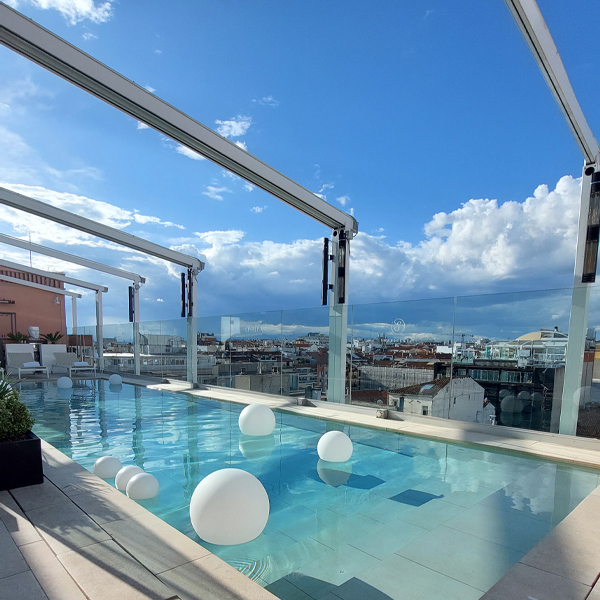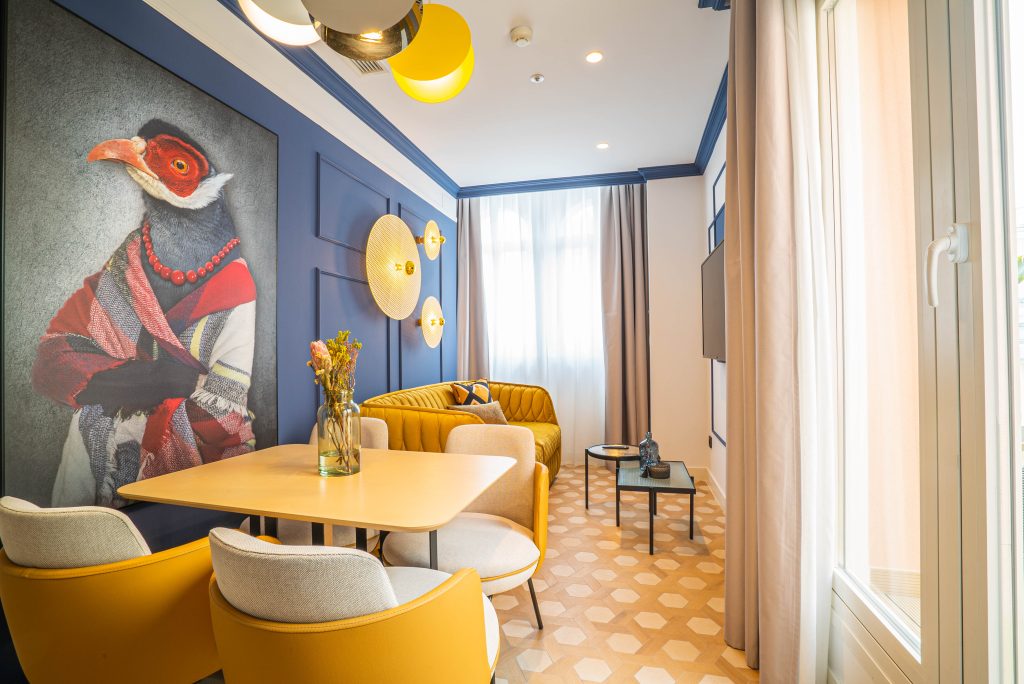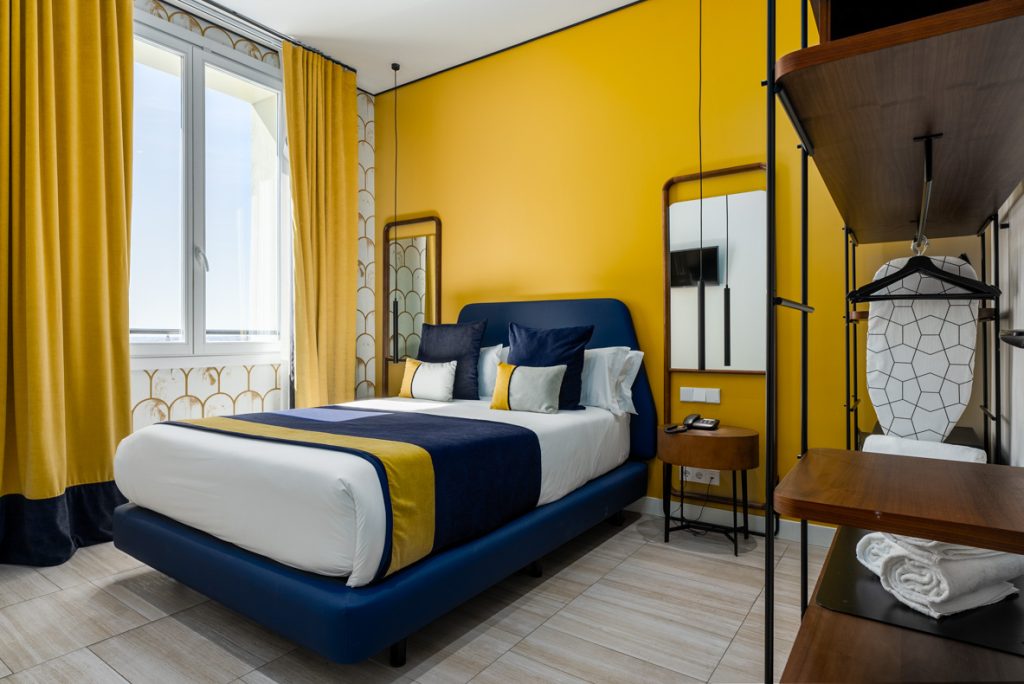Madrid’s Puerta del Sol

Madrid’s Puerta del Sol, located in the heart of the Spanish capital, is much more than just a crossroads. It is a meeting place, a landmark and a silent witness to Spain’s rich history. With its vibrant plazas, majestic buildings and iconic clock, Puerta del Sol has witnessed countless historical and cultural events over the centuries. In this extensive article, we will explore in detail the fascinating history, outstanding monuments and cultural significance of this iconic location.
History and origin of the Puerta del Sol
The history of Puerta del Sol dates back to medieval times, when Madrid was a small walled village. Back then, the gate served as the main access to the city and was one of the main entrances and exits of Madrid. Over time, the medieval walls were demolished and a triumphal arch was built in its place. This arch became the starting point for the radial roads connecting Madrid with other cities in Spain.
Over the centuries, the Puerta del Sol has undergone several transformations and reconstructions. In the 19th century, during the reign of Carlos III, the Casa de Correos was built, a majestic neoclassical building that has become the most recognizable symbol of Puerta del Sol. In addition, the famous Puerta del Sol Clock was installed, which has marked the beginning of each new year with the chimes of midnight since 1866.
Monuments and points of interest
Puerta del Sol is a place full of monuments and points of interest that reflect the historical and cultural richness of Madrid. The statue of the Bear and the Strawberry Tree is one of the most beloved symbols of the city and represents the coat of arms of Madrid. Visitors gather around this statue to take pictures and immerse themselves in the unique atmosphere of the square.
Another prominent monument is Kilometer Zero, a tile in the ground that marks the starting point of national roads in Spain. Many tourists and locals line up to step on Kilometer Zero and consider it a symbol of good luck.
In addition, the equestrian statue of Carlos III, one of the most important monarchs in the history of Spain, stands proudly in the Puerta del Sol. This monument is a tribute to the enlightened king who transformed Madrid into a modern city.
The cultural and social importance of Puerta del Sol
Puerta del Sol is not only a historical landmark, but also a place where Madrid’s culture and society intertwine. The square is the scene of important celebrations and public demonstrations. Every year, thousands of people congregate at Puerta del Sol to welcome the New Year and enjoy the festivities surrounding the midnight chimes. This tradition has become one of Madrid’s most emblematic events and attracts visitors from all over the world.
Puerta del Sol has also witnessed important demonstrations and protests throughout history. It is a place where Madrid society expresses its opinions and fights for its rights. From political protests to sports celebrations, Puerta del Sol has become a space of free expression and encounter for citizens.
In addition, Puerta del Sol is home to an abundance of stores, restaurants and cafes that attract tourists and locals alike. Visitors can enjoy a wide variety of dining options, from the famous Spanish omelette to delicious churros con chocolate. Stores offer a variety of products, from traditional souvenirs to contemporary fashions.
Puerta del Sol is also a hub for transportation in Madrid. The Sol metro station connects several lines and is one of the busiest in the city. This provides easy access to other emblematic places in Madrid, such as the Royal Palace, Gran Vía and Retiro Park.
Madrid’s Puerta del Sol is much more than a crossroads. It is a symbol of the city’s history, culture and tradition. From its medieval origins to contemporary celebrations, the Puerta del Sol has played an important role in the lives of Madrilenians and in the hearts of visitors. If you have the opportunity to visit Madrid, you can’t miss out on exploring and enjoying all that Puerta del Sol has to offer.
Why is it called Puerta del Sol in Madrid?
The Puerta del Sol in Madrid owes its name to its historical origin as one of the ancient gateways to the city. In the Middle Ages, when Madrid was a small walled town, the city had several access gates, and the Puerta del Sol was one of them. This gate was located in the eastern part of the wall and gave access to the area known as the “sun”, which referred to an elevated and clear terrain where the sun’s rays shone brightly.
Over time, the gate gradually disappeared and a triumphal arch was built in its place. However, the name “Puerta del Sol” remained as a reference to its original location and the sunny terrain surrounding the area. As Madrid grew and developed, the Puerta del Sol became a central point of the city, both geographically and symbolically, and its name has remained to this day.
It is important to mention that, throughout history, Puerta del Sol has undergone several transformations and remodeling. Its relevance and popularity have been increasing, becoming an emblematic place and one of the main meeting points for both locals and visitors to the city.
What’s in Puerta del Sol?
Puerta del Sol in Madrid is a place full of life, history and various elements that make it an important landmark for both locals and visitors. The following is a description of some of the outstanding elements and places to be found in Puerta del Sol:
Casa de Correos
It is the most emblematic building of the Puerta del Sol. Built in neoclassical style, it houses the headquarters of the Presidency of the Community of Madrid and is recognized for its central tower and its famous clock, which marks the beginning of the new year with the traditional chimes of midnight.
Statue of the Bear and the Strawberry Tree
Located in the center of the square, this statue is one of the most recognizable symbols of Madrid. It represents the coat of arms of the city and is a popular meeting point for locals and tourists.
Kilometer Zero
It is a stone slab on the ground that marks the starting point of Spain’s radial roads. Many visitors stop to take photos or step on Kilometer Zero, considered a gesture of good luck.
Equestrian statue of Carlos III
Located on the side of Puerta del Sol, this statue pays tribute to Carlos III, one of the most important monarchs in the history of Spain. King Carlos III was recognized for his urban reforms and his influence on the development of Madrid as a modern city.
Stores and restaurants
Around Puerta del Sol are numerous stores, cafes and restaurants, where visitors can enjoy local cuisine, shop and immerse themselves in the hustle and bustle of the area.
In addition to these highlights, Puerta del Sol is known for being a meeting point for celebrations, demonstrations and cultural events. It is the scene of important festivities, such as New Year’s celebrations, parades and concerts, which attract crowds and create a vibrant atmosphere in the square.
Puerta del Sol is a place with a rich history and great cultural importance in Madrid. Its combination of iconic monuments, stores, restaurants and its role as a transportation hub make it an essential place to visit and enjoy the essence of the city.
Where to sleep next to Puerta del Sol?
If you want to sleep next to the Puerta del Sol, SmartRental offers you our network of luxury aparthotels in the heart of Madrid’s Gran Via: SmartRental Gran Vía Centric y SmartRental Gran Vía Capital.
Need more information? Contact us at:



